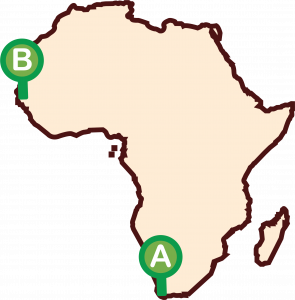H3Africa Collaborative Research Center
Center for Research on the Respiratory Microbiota of African Children (ReMAC)
The Goal: ReMAC seeks to understand how bacteria in the nose or throat cause pneumonia or meningitis in young children worldwide, with the objective to develop tools to better identify and prevent pneumonia in children at high risk.
Project Leads
The Problem
Worldwide, pneumonia is the leading cause of death for children under the age of five. It is also known that air pollution can increase the risk of pneumonia in children, but it is not understood how. Air pollution, both indoor and outdoor, is a major problem in Africa, African children may be even more susceptible to pneumonia.
Project Strategy
- To comprehensively describe the bacterial communities in the nose and throat in healthy African children and in those who develop pneumonia.
- To understand whether the make-up of these communities can increase the risk of pneumonia in children.
- To explore whether air pollution, both within or outside households, affects which bacteria are found in these communities.
Outcomes to Date
Early work by ReMAC has shown that bacteria in the noses of children differ between those who do and do not develop pneumonia, even before pneumonia develops, and that air pollution influences these bacterial communities. This suggests that the types of bacteria in the nose could indicate a child’s susceptibility to developing pneumonia.




